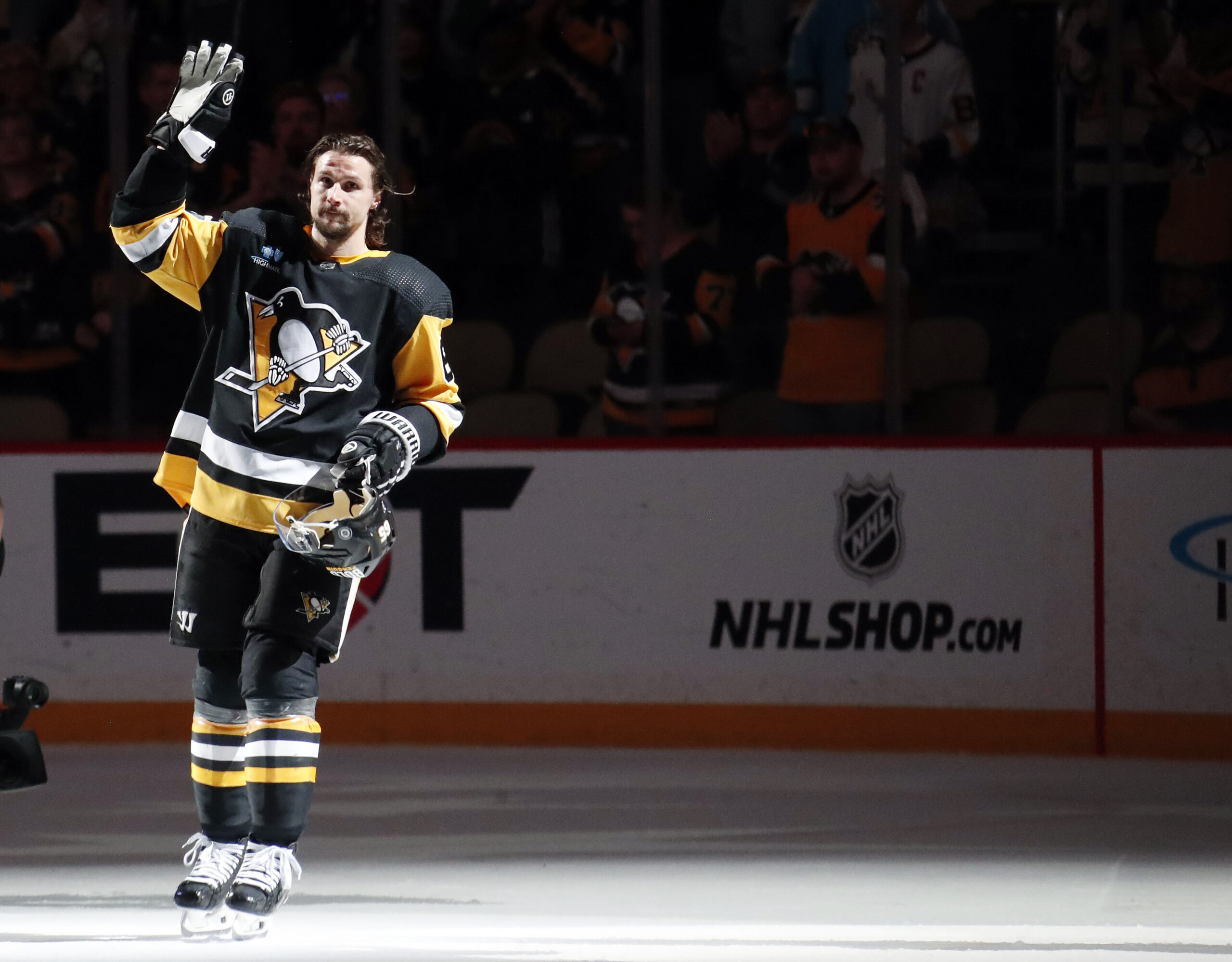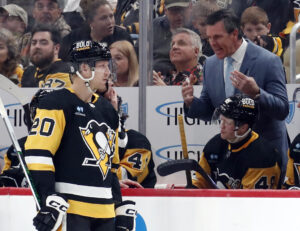Kyle Dubas’ arrival as Penguins GM was an exciting one. These are the three best moves made by Penguins GM Kyle Dubas so far. Kyle Dubas took over as General Manager of the Pittsburgh Penguins with the goal of revitalizing the team to ensure their competitiveness. While his tenure has seen some controversial decisions, several of his moves have significantly strengthened the team. This article highlights the three best moves made by Dubas, analyzing their impact on the Penguins’ performance and future.
Three Best Moves Made by Kyle Dubas
#3. Kevin Hayes Trade
The acquisition of Kevin Hayes from the St Louis Blues was a move that added depth and versatility to the Penguins’ roster. Kyle Dubas secured Hayes and a second-round pick in exchange for the Penguins taking on a portion of Hayes’ salary. Hayes, a veteran with years of NHL experience, figures to fit into the bottom-six group of the team.
?Trade Alert?
Kevin Hayes is heading to Pittsburgh on a trade ➡️? pic.twitter.com/6PwftBII3a
— TSN (@TSN_Sports) June 29, 2024
Impact
Hayes’ presence bolsters the Penguins’ depth. He provides a reliable scoring option and solid two-way play. His versatility as a centre and winger allows the coaching staff to experiment with different line combinations. The second-round pick acquired in the deal also adds a valuable asset to the Penguins cupboard. While Hayes has yet to play a game for the Penguins, it is easy to see the positive impact his acquisition will bring.
Trade Analysis
Kevin Hayes was acquired along with a second round pick for future considerations. Despite concerns about his salary, the addition of a second-round pick makes this trade more valuable. Hayes’ acquisition is seen as a calculated risk that provides both immediate and future benefits. As the Penguins are closer to re-tooling than being true contenders, these are the types of gambles that could pay off mightily for the team.
#2. Jake Guentzel Trade
Trading Jake Guentzel to the Carolina Hurricanes was a difficult decision for Kyle Dubas, but it ultimately brought significant returns that could benefit the Penguins in the long run. The star winger was an integral part of the team for nearly a decade prior to his trade. However, his expiring contract and desire to get paid adequately to his performance caused a natural split.
The Penguins have acquired forwards Michael Bunting, Ville Koivunen, Vasily Ponomarev, Cruz Lucius, and conditional 2024 first-round and fifth-round draft picks from the Carolina Hurricanes in exchange for Jake Guentzel and Ty Smith.
— Pittsburgh Penguins (@penguins) March 8, 2024
Impact
The trade added depth and youth to the Penguins’ system, addressing both current and future needs. Micheal Bunting was a wrecking ball to end the season. He showed tremendous chemistry with Evgeni Malkin and Rickard Rakell. Bunting scored 19 points in 21 games after his acquisition. Additionally, his style of play directly began improving the teams dreadful powerplay. Adding Bunting gave the Penguins a boost by filling a spot that has needed filling since the departure of Patric Hornqvist. Bunting alone is a great piece for the Penguins. However, they also acquired multiple prospects and picks to help them in the future as well.
Trade Analysis
Moving Guentzel was a controversial move given his popularity and performance with the Penguins. However, the return package provided a mix of immediate help and future potential. In exchange, the Penguins received Michael Bunting, prospects Ville Koivunen, Vasili Ponomarev, Cruz Lucius, as well as a second and fifth-round picks. Bunting has brought a competitive edge, while the prospects and draft picks offer long-term rewards. This trade showcases Dubas’ ability to make tough decisions that prioritize the team’s future while managing current needs effectively.
#1. Erik Karlsson Trade
The acquisition of Erik Karlsson was a headline move where Kyle Dubas managed to bring a Norris-Trophy winning defenceman to the Penguins. Dubas acquired Erik Karlsson along with Rem Pitlick and a 2026 third-round draft pick in a deal that sent Jeff Petry, Casey DeSmith, Nathan Legare, Mikael Granlund, Jan Ruuta, a 2024 first-round pick, and a 2025 second-round pick to the San Jose Sharks and Montreal Canadiens.
Erik Karlsson is officially a Pittsburgh Penguin after a monster three-team trade. ?
The Sharks have retained $1.5M of Karlsson’s salary while the Penguins have retained 25% of Petry’s salary. pic.twitter.com/eXM9GMCYyd
— Sportsnet (@Sportsnet) August 6, 2023
Impact
Karlsson’s impact was immediate. His presence on the blue line and power play provided the Penguins with a dynamic offensive threat from the back end. Despite the substantial cost, his ability to change the flow of games and contribute offensively was a major boost for the Penguins. Karlsson scored 56 points with the team last season. Employing Karlsson and Kris Letang on the same blueline gave the team many offensive options from the backend. Additionally, the Penguins saw an addition through subtraction, as players moved like Jeff Petry and Mikael Granlund had become redundant in their Penguin roles.
Trade Analysis
Bringing in Karlsson was a game-changer. Known for his exceptional offensive skills and skating ability, Karlsson was expected to rejuvenate the Penguins’ defense and power play. The trade involved significant assets, but the potential upside made it a calculated risk worth taking. Karlsson was not the only value the Penguins added to their roster. Mikael Granlund and Jeff Petry had become players providing negative results on the ice by the time of the trade. Both players were too expensive for their roles. Dubas’ genius in this trade was moving out two contracts with negative value while acquiring a superstar defenceman for minimal return. Karlsson’s acquisition highlights Dubas’ willingness to invest in high-impact players and take gambles if necessary.
Conclusion
Kyle Dubas’ tenure as the Penguins’ GM has been marked by several moves aimed at bolstering the team’s depth. The acquisitions of Kevin Hayes, the trade of Jake Guentzel, and the blockbuster Erik Karlsson trade stand out as his best decisions. These moves have significantly impacted the Penguins’ roster make-up, providing depth, versatility, and star power to the team. As Kyle Dubas continues to shape the team, these decisions highlight his willingness to take calculated risks to ensure the Penguins remain competitive.
Main Photo: Charles LeClaire-USA TODAY Sports






